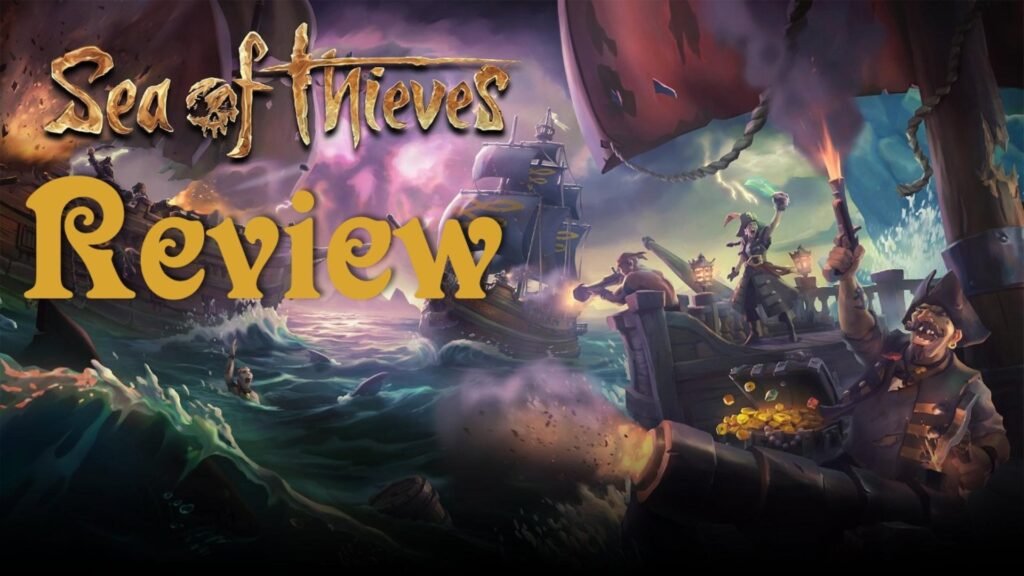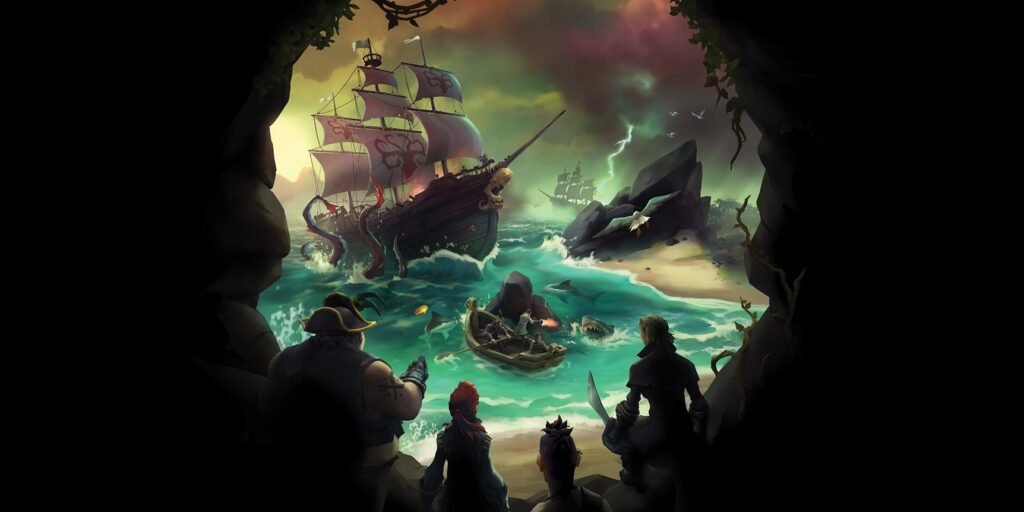
Sea of Thieves: A Pirate’s Sandbox Adventure
The ultimate pirate fantasy means something different to everyone. For some, it might mean plundering the vessels of would-be explorers, wreaking havoc across the open sea with your crew. For others, it might be as simple as singing shanties with a pet monkey. Whatever your particular flavor of piracy, Sea of Thieves offers an impressive open-world sandbox that gives you the freedom to do all of that and more, while making even the most mundane moments enjoyable.
It’s important to understand that, although Sea of Thieves is a shared-world online adventure game, it’s not an MMO with a persistent world—it’s session-based. Each time you log in, you’re given a brand-new ship, whether it’s a two-person sloop, a three-person brigantine, or a four-person galleon. Your loot and supplies are also reset. The game is full of action-packed moments, like exploring remote islands, battling skeletons and other players, and digging up buried treasure. But it’s the downtime between those moments where Sea of Thieves truly shines.
What might be tedious in other games—like traveling or searching for obscure items—becomes a source of camaraderie here. Working with your crew to coordinate and physically control each part of your ship transforms the travel time between missions into one of the game’s most engaging aspects, especially if you’ve got friendly company. If exploring the oceanic sandbox isn’t your thing, you can take on short missions called Voyages, which offer specific objectives like collecting items or treasure. But the real draw lies in the Tall Tales—puzzle-like storylines that challenge your detective skills, though it’s surprising that they aren’t pushed more heavily as the main story missions.
Progression in Sea of Thieves is also uniquely loose. Instead of leveling up through experience points, you increase your reputation with five different companies by completing activities in the world. These companies cover everything from PvP-focused arena matches (Sea Dogs) to collecting skeleton skulls in PvE combat (Order of Souls), and even gathering fish and animal meat (Hunter’s Call).
The game’s unusual approach to progression means there are no skills or equipment that change the way you play. Everyone has access to the same materials and weapons, and that’s it—it never changes. While this might sound like it could get repetitive, it’s arguably the game’s biggest drawback. Everything you unlock, apart from access to new voyages, is purely cosmetic—including items available through real-money microtransactions. The ultimate goal is to reach rank 50 in at least three of the five companies to become a Pirate Legend, which grants bragging rights, shinier cosmetic items, and access to a special, secret company.

While the lack of a death penalty and the impermanence of the world are nice, there’s also no sense of gradual power growth. Your ship never becomes bigger or better, your character never gets stronger, and the islands and outposts remain unchanged. After a while, this can feel stagnant, and the grind to become Pirate Legend can begin to feel daunting.
Sea of Thieves does include a cleverly designed introductory mission called the Maiden Voyage to teach you the basics, but it does a poor job of explaining the overall game flow, mission structure, or how the companies work. Other side content—like dungeon-like strongholds, skeleton ships, large creatures like the Megalodon, and hostile players—remains a complete mystery unless you look them up or have someone else explain them to you.
Thankfully, working with others is a big part of the fun. The game’s simple but enjoyable activities are dramatically improved by the presence of other players, whether they’re friends or foes. Getting a crew together turns monotonous chores into exciting opportunities for teamwork. Nothing beats the thrill of each person owning their role and coming together to defeat enemies. Navigating ship combat is an endlessly complex and satisfying puzzle, though melee and gun-based combat can feel a bit simplistic.
If PvP is your main focus, Sea of Thieves offers a separate mode called the Arena. Here, you race to dig up and deliver treasure, but every crew is after the same loot. The intense team coordination required to succeed really puts the best parts of Sea of Thieves on display, demanding cooperation and an all-hands-on-deck approach.
In the end, Sea of Thieves is a pirate fantasy sandbox with a huge amount to do, made even more unpredictable and exciting by other players. Coordinating across the deck of a massive pirate ship is pure chaos at times, but it’s also endlessly entertaining. While the cosmetic-only progression system doesn’t offer much incentive to keep playing, if you’ve got a good group of friends, it’s hard to find a more entertaining game to jump aboard.